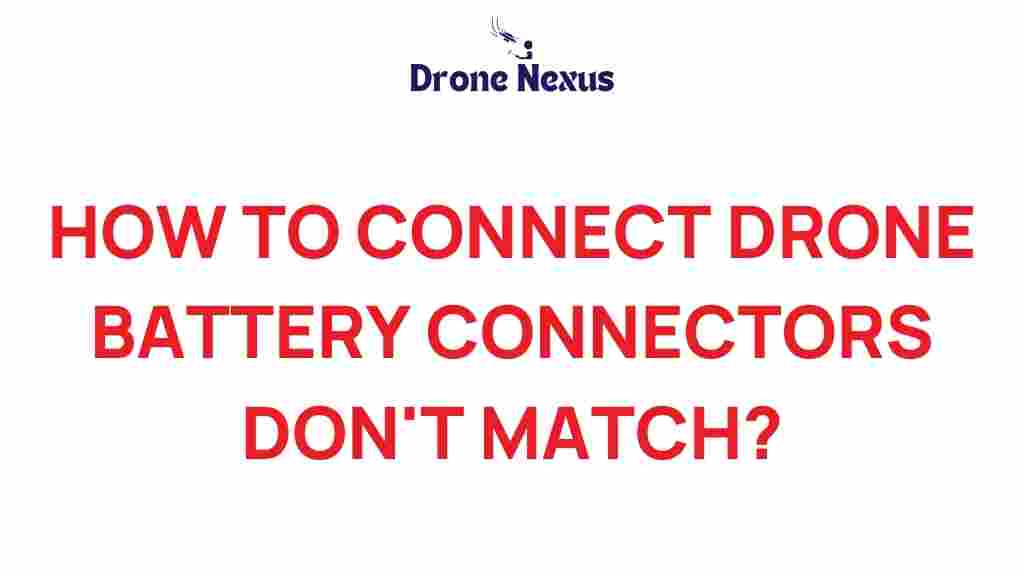Drone Battery Connectors: Bridging the Gap
In the rapidly evolving world of drone technology, the importance of drone battery connectors cannot be overstated. These connectors play a crucial role in ensuring that your drone receives the power it needs to operate efficiently. However, not all drones use the same battery connectors, which can lead to compatibility issues. This article will explore how to connect drone battery connectors that don’t match, providing you with the knowledge to keep your drone flying.
Understanding Drone Battery Connectors
Before diving into the methods for connecting mismatched battery connectors, it’s essential to understand what drone battery connectors are and why they vary. Battery connectors are the interfaces between the battery and the drone’s electronic speed control (ESC). They ensure a secure power connection and allow for efficient energy transfer.
Different drones use different types of connectors such as:
- XT60
- XT90
- Deans (T-Plug)
- JST
- Balance connectors
Each connector type has its own specifications and is designed to handle different voltage and current levels. Knowing the differences will help you understand how to bridge the gap between mismatched connectors.
Why Mismatched Connectors Occur
Mismatched drone battery connectors can occur due to several reasons:
- Upgrading Components: When you upgrade your drone’s battery or ESC, the new components may have different connectors.
- Custom Builds: DIY drone builders often mix and match components that may not have compatible connectors.
- Battery Swaps: Using batteries from different manufacturers can lead to connector mismatch.
Understanding these reasons can help you anticipate issues and prepare for solutions.
Types of Connectors and Their Features
Let’s take a closer look at some common types of drone battery connectors:
- XT60: A popular connector known for its high current rating and secure connection.
- Deans (T-Plug): Lightweight and compact, but can be tricky to solder due to small size.
- JST: Commonly used in smaller drones and micro RCs, suitable for lower currents.
- Balance Connectors: Used in LiPo batteries for balancing cells, critical for battery health.
Each connector type has unique advantages and disadvantages, which will influence your choice when bridging the gap.
Step-by-Step Process to Connect Mismatched Drone Battery Connectors
If you have mismatched drone battery connectors but want to maintain the performance and safety of your drone, follow these steps:
Step 1: Identify Your Connectors
Before making any changes, identify the types of connectors you are working with. Check both the battery and the ESC for the connector type.
Step 2: Gather the Necessary Tools
You will need the following tools:
- Soldering iron
- Solder
- Heat shrink tubing
- Wire cutters/strippers
- Connector adapters (if available)
Step 3: Choose an Adapter or Convert the Connectors
You have two options:
- Purchase an Adapter: The simplest solution is to buy a pre-made adapter that connects the two types of connectors.
- Convert the Connectors: If you prefer a more permanent solution, you can replace one of the connectors with a compatible type.
Step 4: Soldering the Connectors
If you choose to convert the connectors:
- Cut the existing connector off the battery or ESC, leaving some wire length.
- Strip a small section of insulation from the ends of the wires.
- Attach the new connector according to its color coding (usually red for positive and black for negative).
- Heat the soldering iron and melt solder onto the connection to secure it.
- Cover the soldered connection with heat shrink tubing and use a heat gun to secure it.
Step 5: Testing the Connection
Once you have made the necessary connections, it’s time to test:
- Double-check all connections for accuracy.
- Connect the battery to the ESC and power on the drone in a safe area.
- Observe for any unusual behavior, such as overheating or sparks.
Always prioritize safety when testing your drone after modifying the battery connectors.
Troubleshooting Common Issues with Drone Battery Connectors
Even after successfully connecting mismatched drone battery connectors, you may encounter issues. Here are some troubleshooting tips:
Issue 1: Overheating
If your connectors are overheating:
- Check for proper soldering – cold solder joints can cause resistance.
- Ensure the wire gauge is appropriate for the current being drawn.
- Inspect for any damaged wires that may cause shorts.
Issue 2: Intermittent Power Loss
If your drone experiences power loss:
- Inspect the connectors for wear and tear.
- Ensure the connectors are fully seated and locked.
- Check the battery voltage and health.
Issue 3: Incorrect Voltage
If you suspect that the voltage is incorrect:
- Use a multimeter to measure the voltage at the battery and ESC.
- Ensure you’re using the correct battery type for your drone.
- Consult the drone’s manual for the appropriate voltage specifications.
Conclusion: Ensuring Compatibility with Drone Battery Connectors
Connecting mismatched drone battery connectors doesn’t have to be a daunting task. By understanding the different types of connectors, following a systematic approach to soldering, and being aware of common issues, you can keep your drone in the air and enjoy your flying experience. For further reading on drone maintenance and upgrades, check out this comprehensive guide. Remember, safety first: always ensure your connections are secure and your components are compatible.
For more tips and community discussions, visit our drone enthusiasts forum. Happy flying!
This article is in the category Applications and created by DroneNexus Team

1 thought on “Bridging the Gap: Connecting Drone Battery Connectors That Don’t Match”